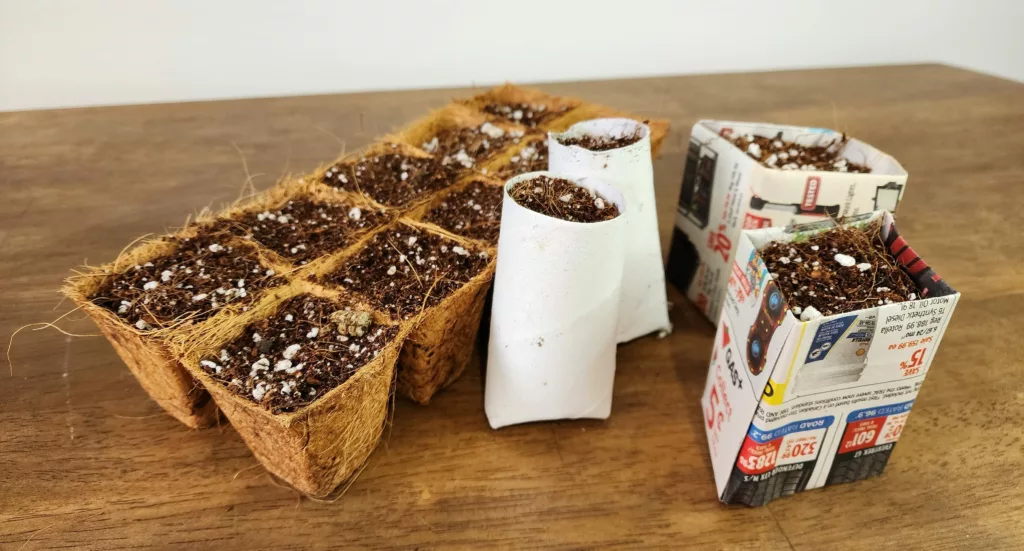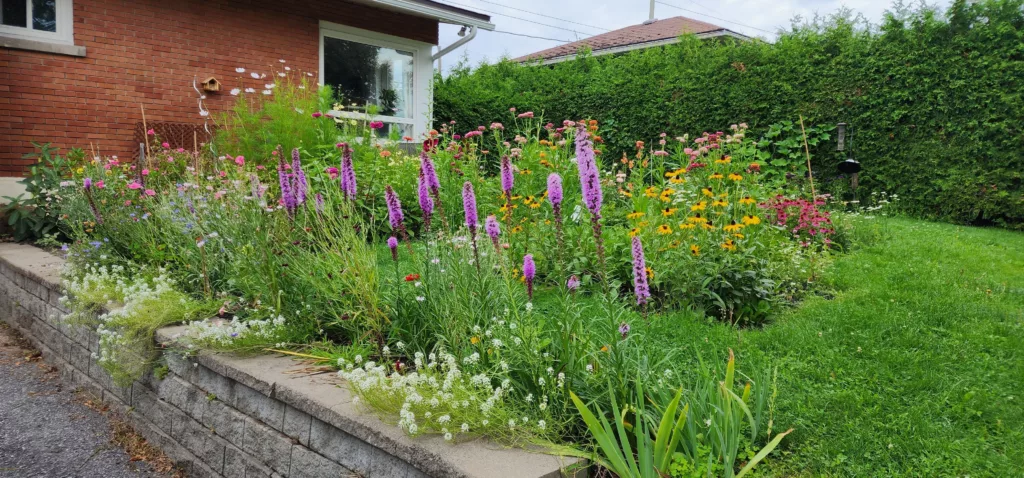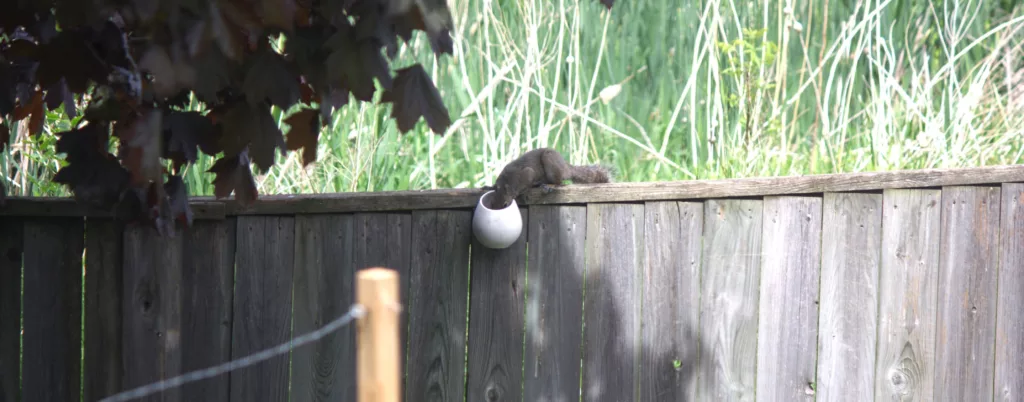Did you know that gardening is a form of activism? Learning how to garden allows you to stand up against corporate greed, it teaches you how to take care of yourself, and it brings you closer to nature.
The closer you are to nature, the more you recognize the need for humans to return to their roots.
So, if you love gardening and the environment, and want to make a statement with your garden, this blog is for you!
How to become a garden activist:
Get gardening tips straight to your inbox!
Reduce your use of peat
Peat is a non-renewable resource that is heavily used in the horticultural industry. Peat bogs are a major carbon sink, and when peat is extracted it releases carbon into the atmosphere. Removing peat from your gardening practices will make you more environmentally conscious.
Places where peat can be found include: seed starting mixes, pots (ie peat pots) and garden soil blends.
In addition to avoiding peat based products, emailing your support to alternative brands helps them know that you appreciate their work and products. Also, email your favourite companies and let them know that you no longer want peat in their products and ask them to change their products or formulas.
We wrote an article all about peat and how to replace it with coco coir which you can find here.
Say no to pesticides
Pesticides on your lawn or garden are harmful to insects, your health and your soil. Many chemicals labelled as safe, often are not. Make sure to do your research before using any products on your lawn or garden.
Learning about insect life cycles will help you fight garden pests eliminating the need for chemicals.
Also, removing the idea of the “perfect lawn” from your mindset will help you become comfortable with a mixture of plants in your lawn. This will stop you from feeling like you need pesticides.
Reduce your plastic use in the garden

Plastic is pervasive in our world, which means it’s nearly impossible to avoid. However, we can work to reduce its use in the garden. Common garden items made of plastic include pots, trays, and tools.
Options to replace these include; toilet paper rolls, newspaper pots, soil blocking, wood trays and tools that are made of wood and metal.
Cancel your physical seed catalogue subscription
As exciting as seed catalogues are, they have an environmental cost to them. To produce and receive a catalogue includes; cutting down trees, creating paper products, coating the paper, covering them in ink, and then mailing them to you. The resources used to print and mail these catalogues has a negative environmental impact.
When you purchase online, your options are much wider. This allows you the opportunity to do your research on who ethically sources their seeds. Some seed companies use seeds from around the world which is contributing further to global emissions.
Also, print catalogues are known to produce more sales. As gardeners, we treat seed catalogues like the Sears Christmas Wish Book and often get swept up and make orders.
The answer? Switch to digital catalogues – it will save both the environment, and your wallet.
Buy your goods locally
Choose local companies for your seeds, seedlings and garden products. Find local seed companies that grow their own seeds or source them in Canada, as these seeds are better suited to our climate anyway.
Instead of supporting big box corporations, find plant seedlings from neighbours, local sales, or from farmers. These plants will have received better care than large garden centres, and will likely do better in your garden. If they do well for the farmers that you bought them from, they should do well for you too.
Invest in quality garden supplies from local companies, and avoid getting products from dollar stores or other companies where the lifespan of the product is limited.
Collect your rainwater

Collecting rainwater helps reduce the pressure on municipalities. Rain barrels come in multiple sizes and are generally filled from the gutters and downspouts off your roof.
If possible, place the barrels high up to provide pressure when using it to water your plants.
If you don’t have a house to collect water off of (like at an allotment), place a garbage can on cinder blocks, flip the lid upside down and drill holes in it to collect rainwater. Bonus points if you can find a can used – vs buying new.
Rain barrels can be purchased off Facebook marketplace (along with IBC totes, however make sure they are food safe). You can also find them at rainbarrel.ca.
If you’re enjoying this content, get more just like it straight to your inbox!
Swap your lawn for native plants

Lawns are a biodiversity desert. It’s where insect dreams go to die. Instead of making the insects sad and hungry, remove your grass and grow native plants. Not only does it support bees and butterflies (along with a large assortment of other insects), it looks beautiful.
Whatever you do, please do not use artificial turf! Find native plants for your area that support your needs (if that looks like a kid’s play area). Once we start installing artificial turf, what comes next? Blow up palm trees? If lawns are where insect dreams go to die, than artificial turf is where insects go to die.
Provide for insects and animals

This is a reminder that insects and animals don’t understand property lines. They were here long before we moved in and built that fence! Create a garden and yard for insects and animals.
This looks like, leaving out water that animals can access, and shallow water for insects to access. Placing water in multiple, protected places allows all visitors to safely grab a drink (and not drown). Also, watching birds bathe is one of life’s greatest joys.
Plant flowers that are accessible for insects (goodbye doubles, hello single petal flowers) and don’t forget to plant for the native insects.
Include bug, bird and bat houses to your property to bring in more biodiversity.
Get your garden certified
There are many organizations in Canada that will certify your garden. From a wildlife-friendly habitat to a monarch waystation, the options are endless. To get certified, you must decide which type you want, and apply on their website! Once approved, you pay to get a plaque sent to you to display in your garden.
What we love about these certifications is that it stops people while out on their walk to read the sign. It brings awareness to your neighbours about the need for pollinator friendly gardens.
Pollination Guelph has a list of pollinator certification options here, but a couple to list include the Canadian Wildlife Federation, Xerces Society and Certified Wildlife Habitat.
Petition your city
Many municipalities have outdated laws that harm the climate and biodiversity. Check your local by-laws and petition your city to review and change the by-laws. Look for local organizations in the city who might also be working on changing the by-laws and partner with them.
Common, outdated, by-laws include; a lawn must stay below a certain height (eliminating any chance for a wildlife/pollinator front lawn), food cannot be grown on front lawns, boulevards cannot be used to grow food or flowers.
The last by-law is understandable from a height perspective, as you don’t want to obstruct the view for drivers, however if they have by-laws for the height of grass, then it is possible to limit the height of boulevard gardening!
There’s so many ways you can become a garden activist! And thanks to your feedback, we’ve compiled additional actions that YOU have shared with us!
Other Actions You Can Do!
- Participate in No Mow May and Leave the Leaves in fall
- Start a community garden or volunteer at one
- Compost
- Seed save
- Donate seeds to a free seed library
- Donate excess food to food banks or fruit harvest programs
- Volunteer for invasive plant cleanup events
- Petition your local garden centre to stop selling invasive plants
A reminder..
You don’t have to do EVERYTHING that is on this list, and you certainly don’t have to do it right away. However, taking the steps above can help you care for nature more fully, lessen your footprint, and help change the industry, one step at a time.
We appreciate you being here, reading this article and learning more about caring for Mother Earth!









